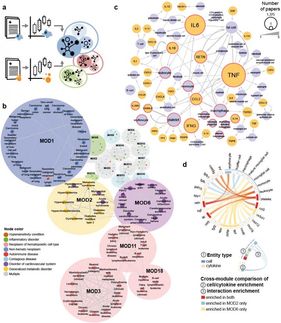Signatures of of heart attack - Multi-omics factor analysis provides new insights
Analysed for the first time: How does the immune system react to a heart attack?
Improving the outcome of patients after a heart attack is one of the major challenges of cardiology. This includes a comprehensive understanding of the pathophysiology and early detection of those patients who have a high risk of an unfavorable outcome. Researchers at LMU University Hospital, Helmholtz Munich and other institutions have now used high-tech biomedical and bioinformatics methods to comprehensively map the immune response to myocardial infarction in humans and identify signatures that correlate with the clinical course of the disease. The results of this groundbreaking work were published in the high-ranking scientific journal Nature Medicine.
In Germany alone, around 300,000 people suffer a heart attack every year. The treatment of patients has significantly improved throughout the recent decades. Nevertheless, many of those affected develop heart failure after the event because the heart muscle does not recover.
According to findings from animal studies, the inflammatory reaction plays an important role after an infarction and has a decisive influence on whether the functions of the heart muscle are restored. "A misdirected or excessive immune response can jeopardize the recovery of the heart function," says Dr. Kami Pekayvaz, lead author of the new study and clinician scientist at Department of Medicine I at LMU University Hospital, LMU Munich.
A team led by him, Viktoria Knottenberg, PD Dr. Leo Nicolai and Prof. Konstantin Stark from the Department of Medicine I at LMU University Hospital and Corinna Losert and Dr. Matthias Heinig from Helmholtz Munich has analyzed for the first time how the immune system reacts to a heart attack in humans. The researchers examined the blood samples of heart attack patients who were treated at the LMU University Hospital and showed different clinical outcomes.
Atlas of immune responses
The immune cells in the blood were analyzed cell by cell with regard to their RNA expression profile. RNA is produced when cells translate the information of their genes into proteins - a so-called transcriptome analysis can reveal the current state and characteristics of a cell. In addition, the blood plasma was examined for various substances using protein analyses, which provide details on the inflammatory and other processes. These analyses are among the most modern possible methods, so-called multi-omics methods.
A specific bioinformatics technique (MOFA, for Multi-Omics Factor Analysis) recognized overarching patterns in the mass of data obtained. "This method is ideal for identifying and summarizing many smaller effects that are coordinated in the same direction," says Dr. Matthias Heinig, head of a bioinformatics working group at Helmholtz Munich. This made it possible to create an atlas of immune responses after a heart attack. "These patterns can explain differences between the clinical and temporal courses of the patients," says Prof. Konstantin Stark, Senior Consultant in Cardiology at the LMU University Hospital. This means that certain of these "immune signatures" are associated with a better recovery of heart function, others with a worse one.
This atlas of the immune response in myocardial infarction is highly relevant for further basic cardiovascular research and potentially indicates that multi-omics analyses of blood samples could be used to predict the clinical course of a heart attack patient. However, the concept of MOFA-based diagnostics in cardiovascular diseases must be tested in further studies - and this is what the Munich researchers intend to do in the coming years.
Original publication
Other news from the department science
Most read news
More news from our other portals
See the theme worlds for related content
Topic world Protein analytics
Protein analytics provides a deep insight into these complex macromolecules, their structure, function and interactions. It is essential for discovering and developing biopharmaceuticals, understanding disease mechanisms, and identifying therapeutic targets. Techniques such as mass spectrometry, Western blot and immunoassays allow researchers to characterize proteins at the molecular level, determine their concentration and identify possible modifications.

Topic world Protein analytics
Protein analytics provides a deep insight into these complex macromolecules, their structure, function and interactions. It is essential for discovering and developing biopharmaceuticals, understanding disease mechanisms, and identifying therapeutic targets. Techniques such as mass spectrometry, Western blot and immunoassays allow researchers to characterize proteins at the molecular level, determine their concentration and identify possible modifications.
























































